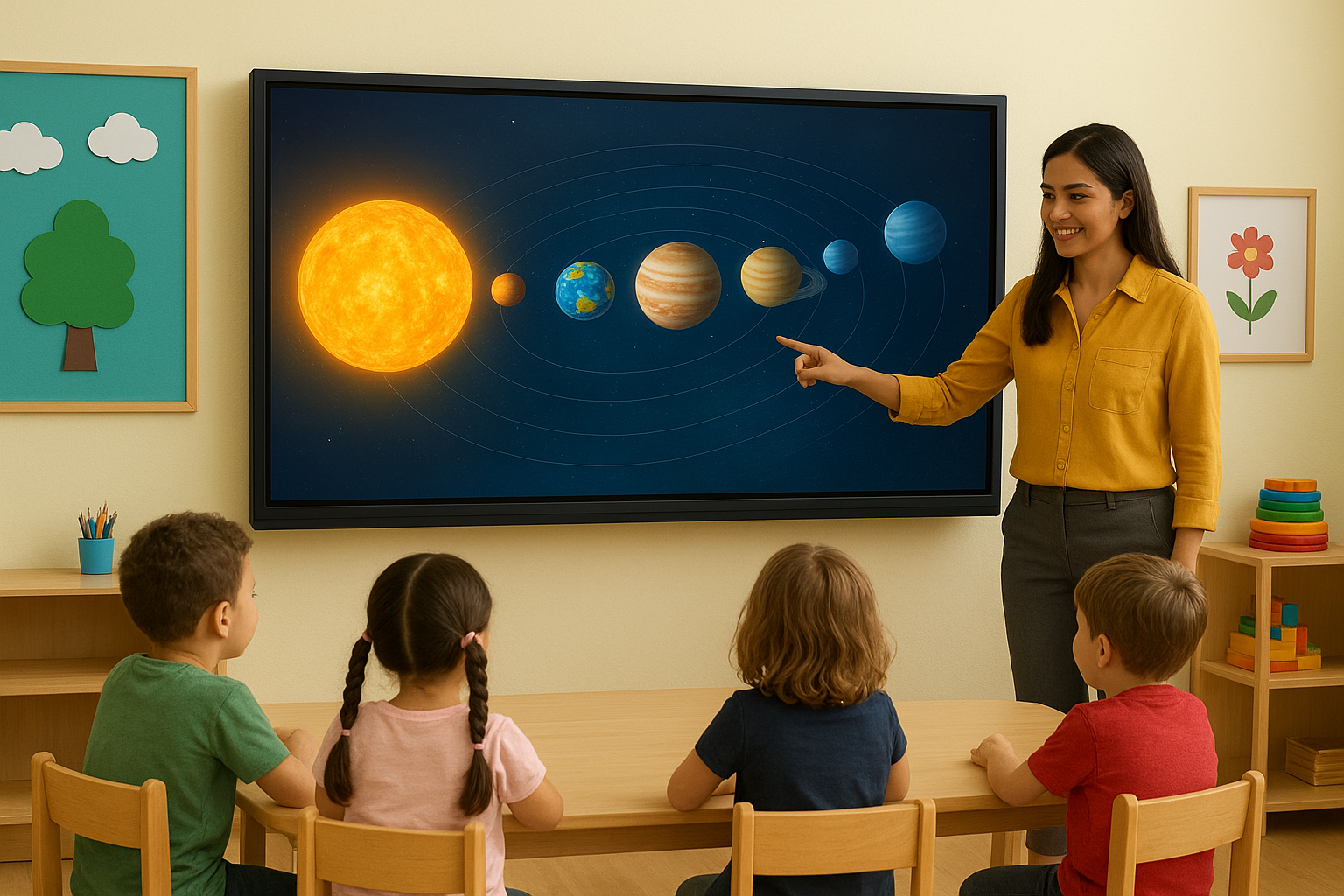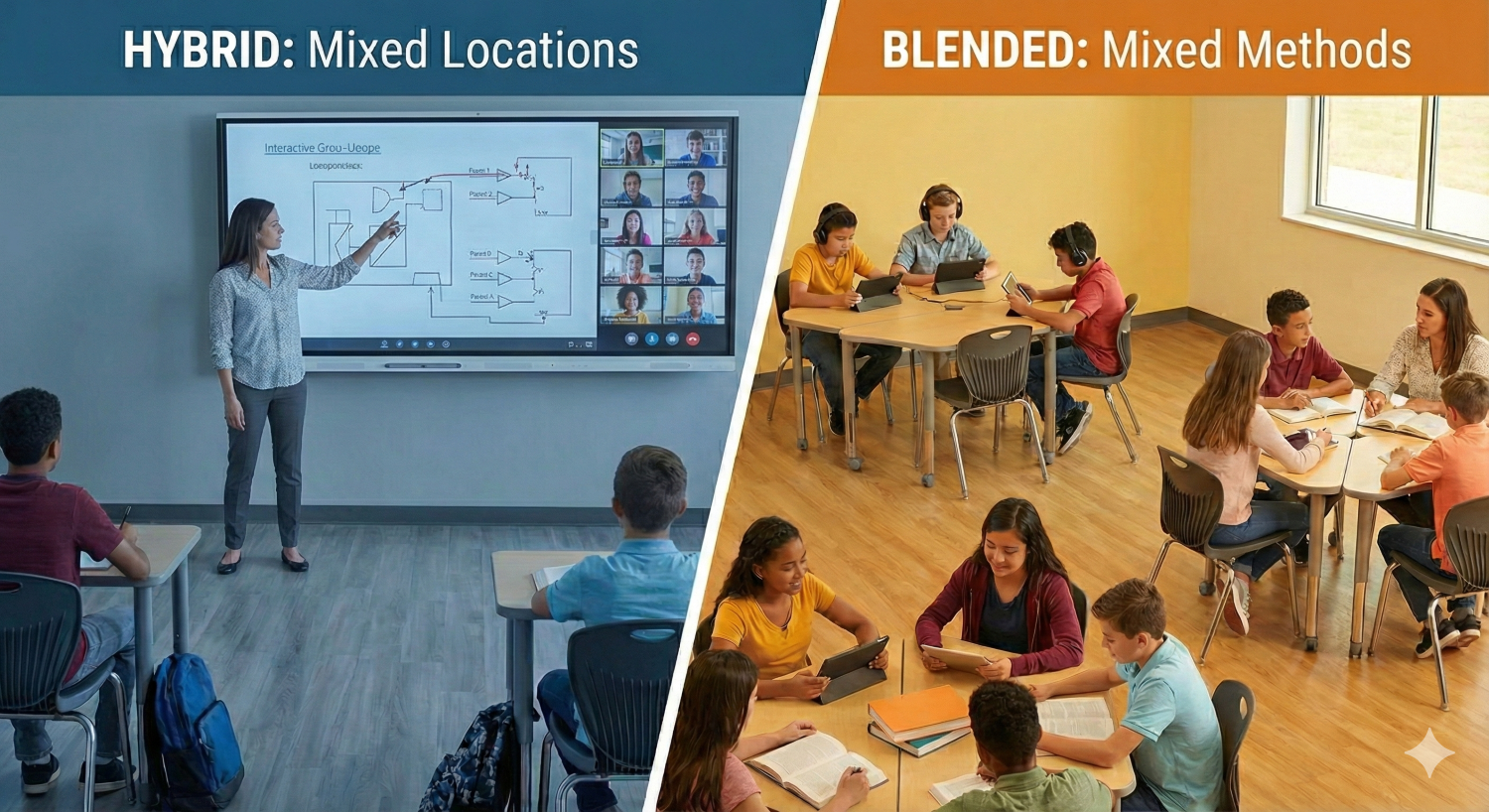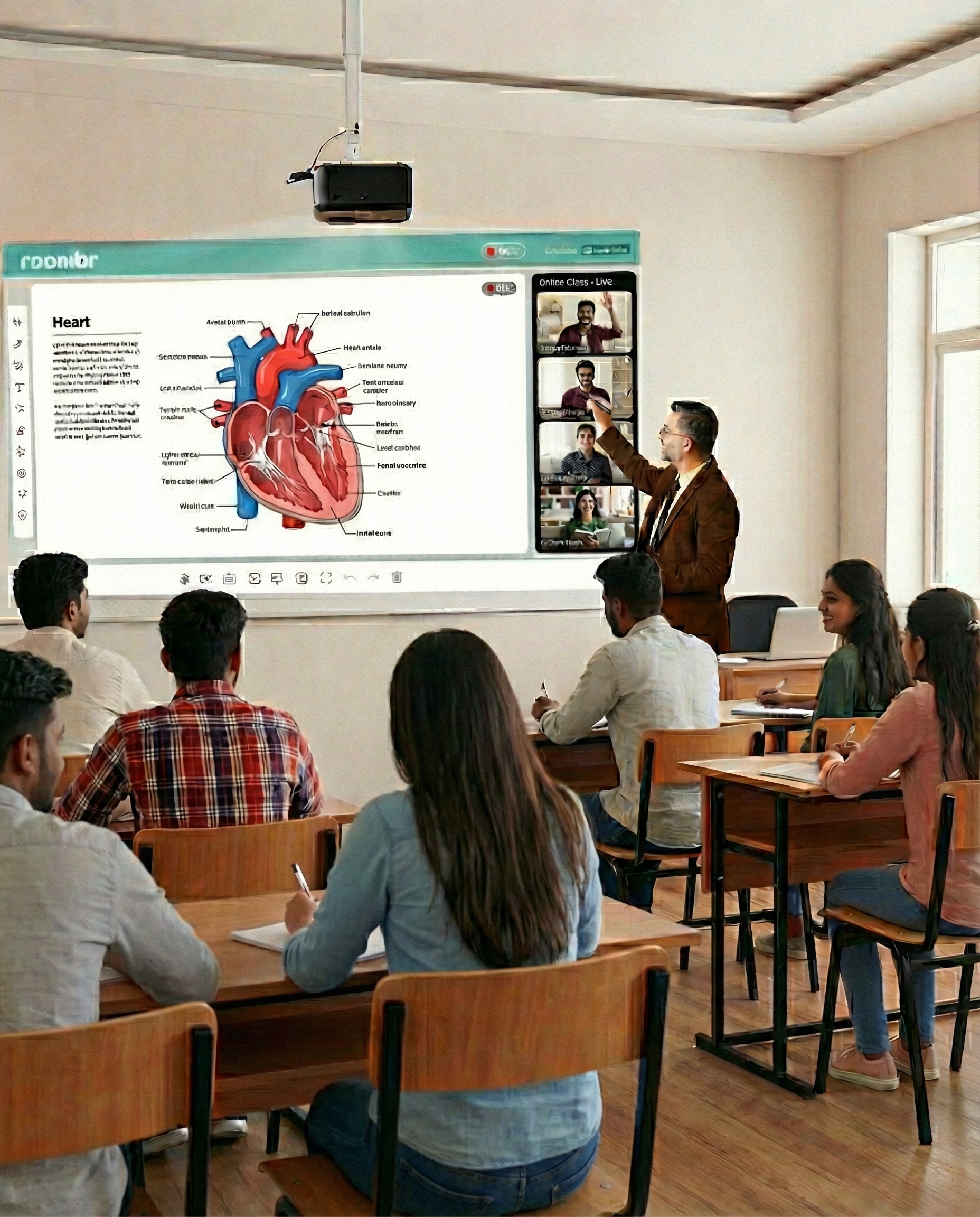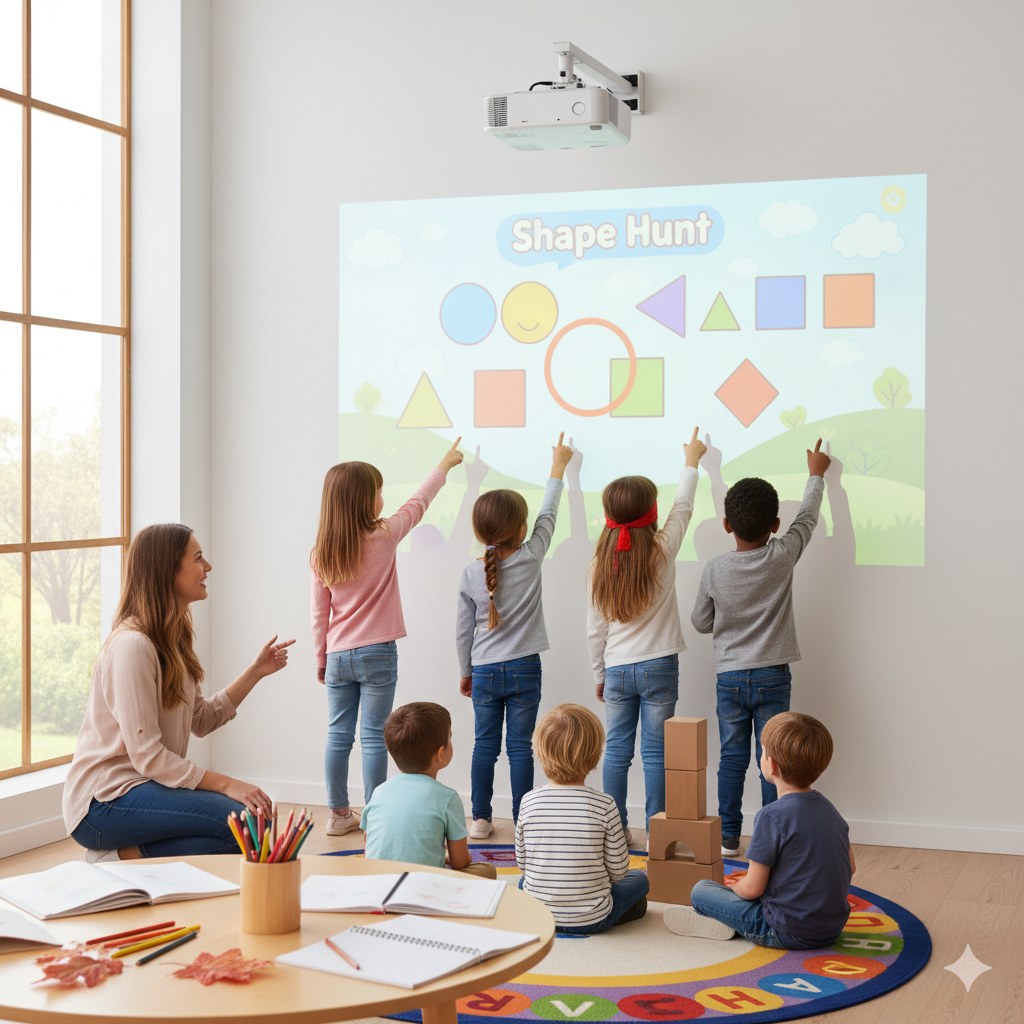How Digital Classrooms Bring 3D Learning to Preschools and Kindergartens
.jpg)
Preschool and kindergarten classrooms are changing faster than ever. Parents expect more than colorful walls and picture books. They want schools that prepare children for a world already driven by technology. At the same time, educators face a challenge—how do you explain complex ideas like the human body, planets, or vehicles to children who are just starting to learn?
This is where the digital classroom plays a vital role. Beyond smart screens and online content, today’s solutions combine interactive panels, advanced teaching tools, and even 3D learning experiences. For preschools and kindergartens, 3D learning is no longer a luxury. It is quickly becoming a must-have to keep students engaged and to give schools a strong competitive edge.
The Power of 3D in Early Education
Children in their early years learn best when they can see, touch, and interact with what they study. Traditional 2D pictures or videos cannot always capture their imagination. But 3D learning adds depth and realism. It makes a subject feel alive.
When a preschooler looks at a flat diagram of the heart, they see only shapes and labels. When the same heart is projected in 3D, beating and pumping blood, it turns into an unforgettable experience. Students don’t just look at it, they feel it. This kind of spatial and visual interaction improves memory retention, builds curiosity, and strengthens focus in a way that static images cannot.
Many educators in India have noticed this shift. Children are already digital natives. They are used to playing with touch devices at home. A classroom without interactive tools feels less engaging than what they experience outside. That is why schools introducing 3D digital classrooms see higher satisfaction from students and parents.
Where 3D Makes the Biggest Difference in Preschool

The real advantage of a digital classroom with 3D learning lies in how many topics it can simplify for younger children. Some concepts are difficult to explain with words alone, but become crystal clear when seen in motion.
- Body Parts & Senses: Preschoolers often ask, “Why do we breathe?” or “Where is my stomach?” With 3D, children can see how lungs expand, how food moves through the digestive system, or how eyes and ears work.
- Animals & Habitats: Instead of looking at flat images of a lion, children can see it move in its habitat, hear its roar, and understand its environment. This builds both knowledge and empathy for nature.
- Vehicles & Machines: Explaining how wheels turn or how an engine works is tough in kindergarten. A 3D model of a car or train makes it fun, simple, and memorable.
- Solar System: A favorite topic for early learners. Rather than memorizing planet names, children can see them revolve around the sun, compare their sizes, and understand distance in a way books never achieve.
- Daily Life Objects: Beyond science, 3D can show how simple tools work—scissors, toothbrushes, or kitchen items. This connects classroom learning to everyday life.
- Storytelling & Imagination: Animated 3D stories add depth to moral lessons and language learning, making abstract ideas like kindness or sharing more relatable.
For schools, these experiences are more than teaching aids. They become strong selling points for parents who want their children to enjoy learning rather than fear it.
Why Traditional Smart Boards Fall Short
Many schools already use smart boards or projectors, but most of these tools are limited to 2D images, videos, or basic slides. While better than chalkboards, they do not give the same immersive impact.
- No Depth: A 2D video cannot show how an organ looks from every angle. Children watch, but they do not explore.
- Passive Engagement: With videos, students remain viewers. They cannot interact or change their perspective. Over time, attention drops.
- Maintenance Issues: Many smart boards require multiple devices, CPU, projector, speakers, which increases cost and complexity.
This is why smart classroom solutions need to move beyond simple display boards. Preschools and kindergartens need interactive systems that are both engaging and easy to manage.
Roombr Digital Classroom’s 3D Concept Learning Advantage
Roombr Digital Classroom was built to solve this very challenge. It is not just another interactive panel or projector. It is the world’s first patented digital classroom technology, made in India for Indian schools.
Here is how Roombr transforms preschool and kindergarten learning:
- Large Interactive Wall Display: Instead of a fixed-size board, Roombr projects onto the wall, creating a wide, lifelike display where children can see objects in real scale.
- Interactive Panel Experience: The system works with an IR pen and touch controls. Children can rotate a planet, zoom into an animal, or explore body parts by interacting directly with the content.
- 3D Concept Library: From basic preschool topics like animals and alphabets to advanced STEM concepts, Roombr grows with the child. Schools don’t need to reinvest every year.
- Plug-and-Play Setup: Unlike traditional systems, it is a single unit with minimal wiring. Teachers can switch it on and start teaching without technical help.
- Future-Proof Investment: While it adds immediate value in preschool and kindergarten, it can scale to higher grades, making it a smart long-term investment.
For decision-makers, this combination means fewer maintenance headaches, better classroom outcomes, and stronger parent appeal. In competitive urban markets, the difference between one preschool and another often comes down to the classroom experience. With Roombr, schools can set themselves apart.
Conclusion
3D learning is more than a teaching aid. It is a way to nurture natural curiosity at the very start of a child’s academic journey. By moving beyond traditional screens and static lessons, schools can give children an engaging, interactive environment that prepares them for the future. With Roombr’s digital classroom, educators have a powerful, scalable solution to make preschool and kindergarten learning more immersive, impactful, and memorable.
Bring a Digital Classroom Experience to Your Preschool
Roombr brings this vision to life. With its patented technology, immersive interactive panel solution, and an ever-expanding 3D content library, it is more than a tool. It is a pathway to future-ready learning. For schools, it becomes both an educational upgrade and a smart investment.
Bring complex ideas to life for your youngest learners, whether it’s body parts, animals, vehicles, or the solar system. With Roombr’s 3D concept learning, children don’t just watch, they see, touch, and explore concepts interactively.
Discover how Roombr transforms early education with lifelike 3D visualization. Book a demo today and experience the difference the world’s first patented digital classroom can make in your preschool.
Foziya Abuwala
Share
Step Into the future of
Education with Roombr

















